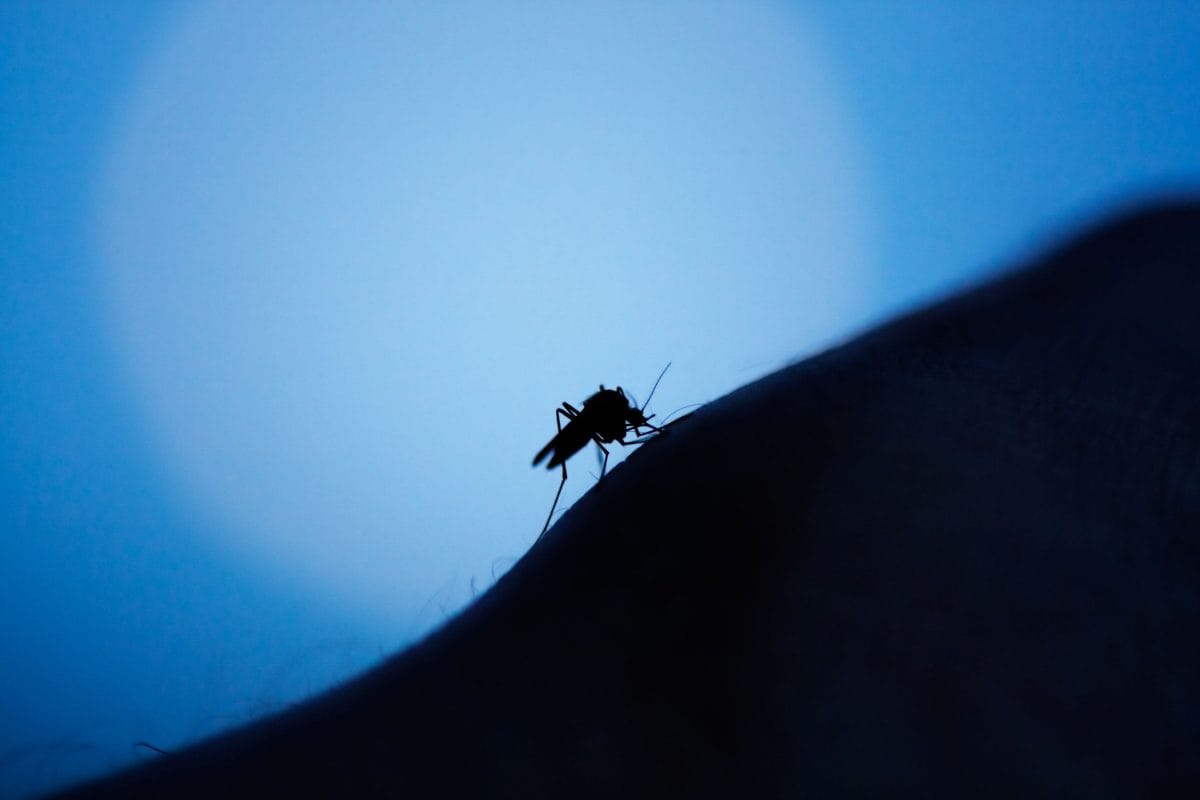 India will prioritise the eradication of malaria on its public health agenda, Union Health Minister Dr Harsh Vardhan has announced on the heels of a landmark report by experts which proclaims that a malaria-free world by 2050 is attainable – if a bold approach is undertaken.
India will prioritise the eradication of malaria on its public health agenda, Union Health Minister Dr Harsh Vardhan has announced on the heels of a landmark report by experts which proclaims that a malaria-free world by 2050 is attainable – if a bold approach is undertaken.
“We are working towards ending malaria as soon as possible,” Vardhan told reporters in Pune, describing it as one of the government’s “topmost priorities.” India accounts for the fourth highest number of malaria cases in the world, according to a report recently published by the Lancet Commission on Malaria Eradication, synthesising the inputs of more than forty experts from the fields of biomedicine, economics, malariology, and health policy.
In 2017, India reported 9.6 million cases with only Mozambique, the Democratic Republic of the Congo (DRC) and Nigeria registering a higher burden of the disease. India accounts for four percent of the global burden of malaria cases.
India aims to eliminate malaria by 2030. This objective is attainable, according to Dr Altaf Lal, Senior Advisor for Global Health and Innovation, Sun Pharmaceuticals Industries Limited, India. “There is significant reduction in cases of malaria in India over the past several years, which provides optimism that elimination goal of 2030 is achievable,” Dr Lal told Health Issues India when asked how likely it is the government’s elimination target of 2030 will be met.
“The recent data from the State of Odisha and Malaria Elimination Demonstration Project in the State of Madhya Pradesh have revealed that incidence of malaria can be significantly reduced by robust surveillance, rapid testing and prompt treatment by trained field workers. The lessons and experiences from these elimination programs would be valuable for national elimination program.”

Globally, progress has been made but malaria remains a significant public health challenge. “In 2017, 86 countries reported a total of 219 million malaria cases and 435,000 malaria deaths, down from 262 million cases and 839 000 deaths in 2000”, the report says. However, distribution is uneven: together with Mozambique, the DRC, and Nigeria, India accounts for 45 percent of the world’s malaria cases. As such, the report “[emphasises] the need for simultaneous action both in countries that are nearing elimination and in countries with the highest malaria prevalence to achieve eradication by mid-century.”
Indeed, a number of challenges remain. Speaking of the lessons learnt from the Global Malaria Eradication Programme (GMEP), which ended in 1969, the report says “the biggest challenges at the time were considered to be complacency and absence of political will; poor leadership and management; inadequate tools to eliminate in high transmission areas, particularly sub-Saharan Africa; population movement and poor access to malaria services; minimal knowledge of vector behaviour; insufficient funds; and the early development and spread of insecticide and drug resistance.” Half a century later, “the findings and conclusions of this final GMEP report are startlingly familiar. The known benefits of eradication remain the same, as do many of the operational, technical, and financial challenges.”
“The success of the elimination program will also depend on robust active and passive surveillance, so that every individual with infection is identified and promptly treated. The third component in the challenge category, to monitor introduction of cases as large areas of India become malaria-free. This would require robust surveillance and trained workforce.”
These challenges are true of India. Insofar as the prospect of elimination of malaria, the report states “taking the example of the Asia Pacific Leaders Malaria Alliance (APLMA) countries, India, eastern Indonesia, and Papua New Guinea will struggle to meet the elimination deadline of 2030 on the basis of current trajectories.” However, Dr Atal tells us that, with the right interventions, these challenges can be overcome.
“The challenges in meeting 2030 elimination goals are not unique to India; they are common to many countries that have varying epidemiology, multiple species of malaria parasites in circulation and malaria in hard-to-reach areas,” says Dr Atal concerning the main challenges threatening elimination by 2030. “These challenges can be overcome through programs at district level, which are supported effectively by state and national so that commodities (long-lasting insecticide impregnated bednets, insecticides for household sprays, diagnostic tests and anti-malarial drugs) are always available.
“The success of the elimination program will also depend on robust active and passive surveillance, so that every individual with infection is identified and promptly treated. The third component in the challenge category, to monitor introduction of cases as large areas of India become malaria-free. This would require robust surveillance and trained workforce. Finally, the fourth and most important aspect for successful elimination is placing operational, technical and management controls through regular independent reviews, so that policy makers and political leaders are briefed on a regular basis.”

“Collaboration is also needed: for India, this involves the public health sector, the private sector, and authorities at the central, state, district and local levels, among others. To fortify this, strong leadership is required.”
The report also identifies the need to work towards universal health coverage (UHC) and reduce out-of-pocket spending on healthcare, a major issue in India which reports one of the highest rates of out-of-pocket health expenditure in the world (sixty percent, as per the report). “Driving down out-of-pocket spending, and reallocating these funds to prepaid social health insurance schemes, is a major goal for universal health coverage,” the report says.
Of out-of-pocket spending on malaria, the report does note that “malaria is less dependent on out-of-pocket spending than health in general” but that “malaria is a disease affecting mainly very poor households for whom this degree of out-of-pocket spending might cause avoidance of care, which in turn promotes onward transmission.” As such, it is clear that there is a significant onus upon India to accelerate its efforts towards UHC and improve the country’s public health infrastructure to bolster the fight against malaria and public health efforts at a broader level.
Collaboration is also needed: for India, this involves the public health sector, the private sector, and authorities at the central, state, district and local levels, among others. To fortify this, strong leadership is required. “perhaps the most important leadership requirement for malaria eradication is unambiguous and energetic commitment by national and subnational leaders in every endemic country…well informed leadership by heads of state sets a national vision for malaria and can mitigate fluctuating commitment caused by political turnover, particularly in the ministry of health. Furthermore, leadership by the head of state is advantageous in institutionalising a whole-of-government approach to malaria, including diplomacy, fiscal policy, infrastructure, and trade—instruments that can be leveraged to accelerate malaria elimination.”

Asked if the healthcare sector is doing enough to innovate in the field of malaria treatment, he responded “malaria elimination and eventually eradication efforts would require diagnostic tests capable of detecting malaria parasites at [a] very low level, insecticides that would work against mosquitoes that are resistant to presently available insecticides, and drugs or drug combinations that have low pill dose need, can be administered for shorter duration and works for [a] longer period of time, and a drug or drug combination that works against both predominant species (P. falciparum and P. vivix) of malaria parasites.
“These efforts would require active support of government and multilateralmulti-lateral donor agencies through targeted grants. Equally important in innovation for development of new tools is the role of National Regulatory Agencies for fast review programs leading manufacturing and market approvals of tools needed for case management and vector control.”
“The world could be malaria-free within a generation; India could eliminate the disease in little over a decade.”
The challenges facing the world – and India – concerning malaria eradication are manifold and a multisectoral, efficient response is the need of the hour. Challenges ranging from drug resistance compromising the efficacy of the most commonly used frontline medications to sanitation issues in cities offering vector species breeding grounds all need to be addressed, with the full force of government commitment behind such efforts.
The Lancet Commission report identifies the challenges and solutions, as well as the broader benefits that come from a thorough response to malaria: “the expansion of routine health services; the creation of essential infrastructure that benefited other vector-borne disease control programmes and the health system at large; improved economic development and the breaking of the vicious cycle of poverty and disease; and valuable advances in scientific research and technology.”

“The Lancet Commission makes a bold call for eradicating malaria by 2050,” says World Health Organization Director-General Dr Tedros Adhanom Ghebreyesus, writing in a linked comment.
“I would be thrilled to see this global scourge eradicated even earlier. But we will not achieve eradication within this timeframe with the currently available tools and approaches—most of which were developed in the past century or even earlier. So, although the imperfect application of imperfect tools has reduced the burden of malaria and helped eliminate malaria from many countries, it is not enough. The good news is that we, the global malaria community, know what we need to do.”
Indeed, the world could be malaria-free within a generation; India could eliminate the disease in little over a decade. The achievability of this is very much dependent on how governments strategise going forward and whether it will heed the call of malaria experts to innovate, collaborate, to strengthen systems and to remain vigilant in the fight. Vardhan shows India has the will, but it must also act accordingly.
“I want to challenge us all to deliver on our promises,” Dr Tedros adds. “The promise of increased domestic investments in health; the promise of reducing malaria in the highest-burden countries; the promise of achieving universal health coverage; the promise that no child would die from a preventable disease and the promise that no one would be left behind in pursuit of our health and development goals because they were born poor. By delivering on these promises and by investing in the development of innovative and transformative tools, the world can achieve the health-related [Sustainable Development Goals]—our legacy to future generations.”
“Malaria can and should be eradicated within a generation, declare global health experts” can be accessed here.


You are sharing the best heath blog, follow meddco healthcare https://www.meddco.com/ for the best affordable healthcare treatment and packages